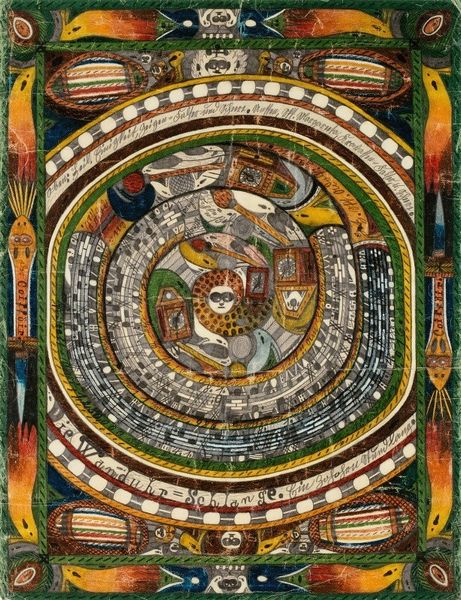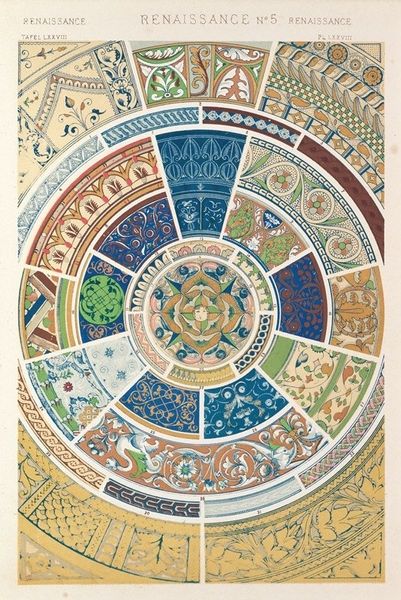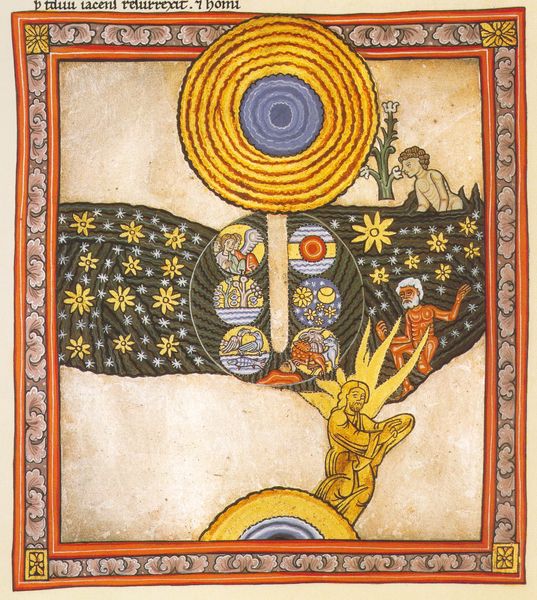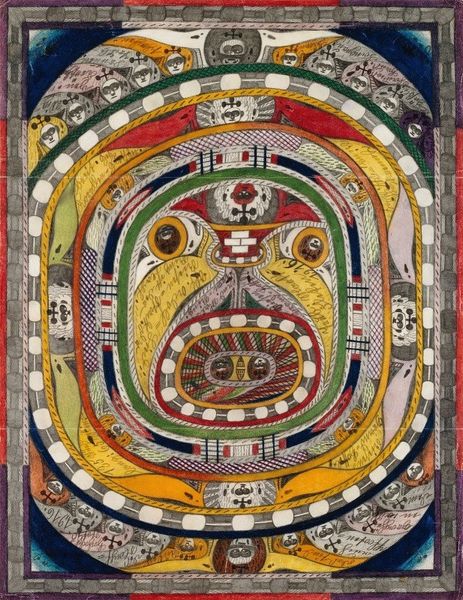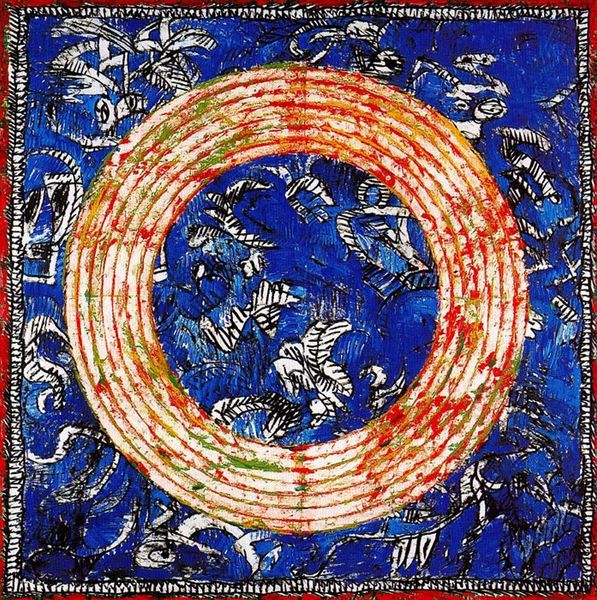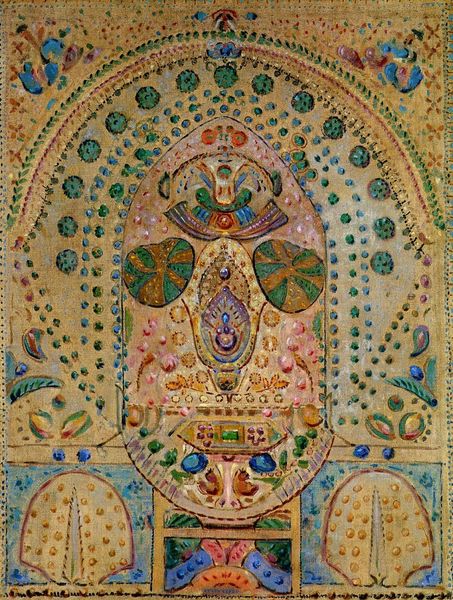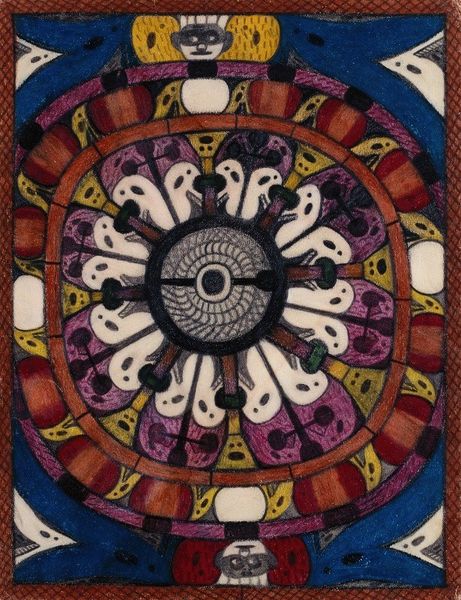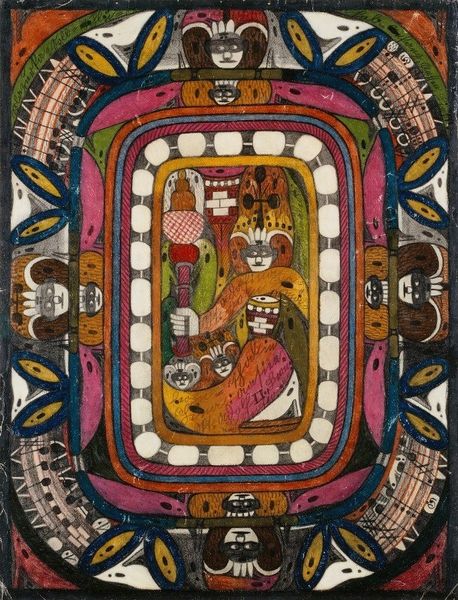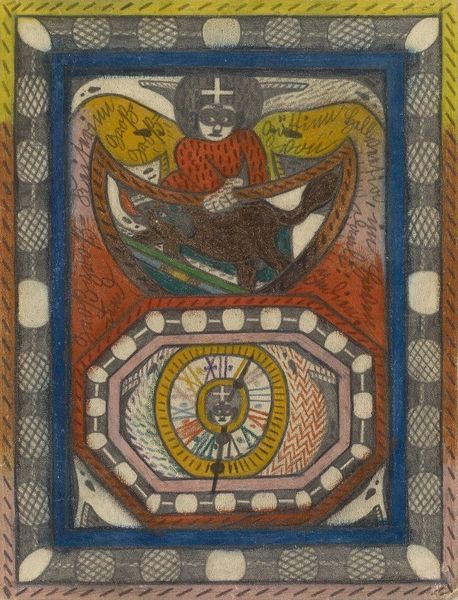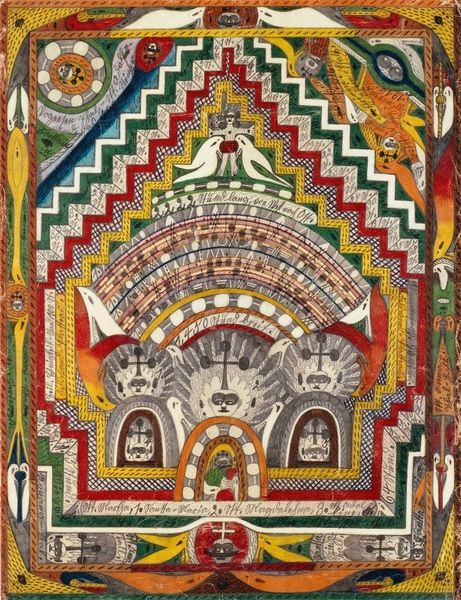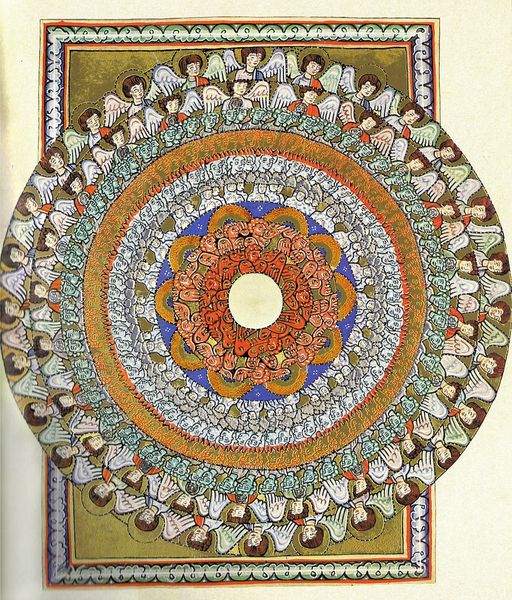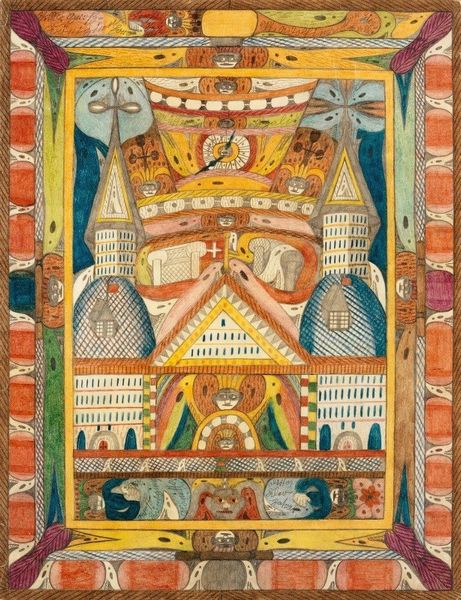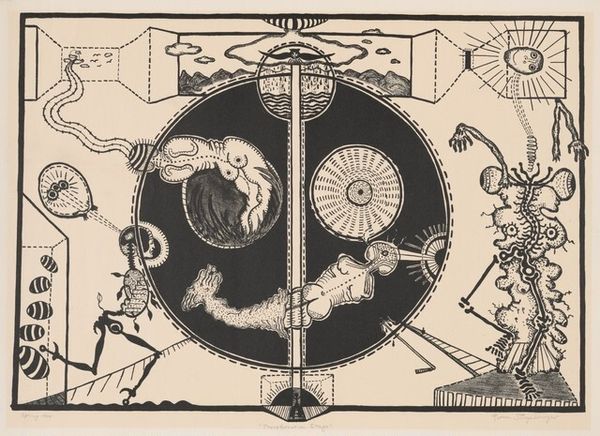
tempera
#
byzantine-art
#
medieval
#
allegory
#
tempera
#
figuration
#
geometric
#
history-painting
#
miniature
Copyright: Public domain
"The Cycle of the Seasons" was created by Hildegard of Bingen using ink and tempera on parchment. The artwork's striking use of color and intricate details draw us into a world where art, science, and theology intertwine. The circular design echoes medieval cosmological diagrams, but its true power lies in the hands-on process. Hildegard likely prepared her own pigments, grinding minerals and plants to achieve the vibrant hues. She also may have overseen assistants who prepared the parchment and mixed the paints. The labor-intensive processes involved would have been seen as acts of devotion, reflecting the monastic tradition's emphasis on skilled work as prayer. Hildegard wasn't just illustrating ideas, but grounding them in the tangible world. The very materiality of the piece – from the animal skin support to the precious pigments – speaks to the resources, labor, and knowledge that underpinned medieval society. By understanding these elements, we recognize that Hildegard's work transcends simple illustration, becoming a powerful statement of embodied knowledge and artistic expression.
Comments
No comments
Be the first to comment and join the conversation on the ultimate creative platform.
